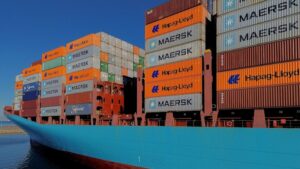
The Goorambat East solar farm, located near Benalla, Victoria, has successfully sent its first power to the grid. This facility, with a capacity of 250 megawatts, marks a significant milestone as it becomes the largest solar project in Victoria, increasing the total number of large-scale solar farms in the state to 17. Engie, which operates the nearby Hazelwood battery, is at the helm of this innovative project.
Goorambat East is notable for its use of robotic technologies aimed at reducing costs and accelerating the installation process, which is typically labor-intensive. Various companies have collaborated on this project to showcase their automated systems for installing pilings and mounting solar modules. Engie acquired the project from Neoen in 2023 and began installing the first of approximately 500,000 solar panels around six months ago.
In late September, Goorambat East achieved registration status, paving the way for its anticipated full production, expected in 2026. The initial output, recorded on Wednesday, consisted of just a few megawatts directed into the grid. The solar farm will now undergo several months of testing and commissioning, during which it must navigate a series of “hold points” as part of the verification process.
Once operational, Goorambat East will surpass the Kiamal solar farm, establishing itself as the largest solar facility in Victoria. Currently, the largest solar project in Australia is Acen Australia’s partially completed 720 megawatt New England solar project in New South Wales. However, additional large-scale projects are in development across the nation.
In Victoria, two upcoming solar battery hybrid projects are set to eclipse Goorambat East in size. Edify Energy’s Nowingi solar farm will feature a capacity of 300 megawatts alongside a 300 megawatt, four-hour battery, while Lightsource BP’s West Mokoan solar farm will also reach 300 megawatts. Both projects are part of a broader initiative that includes six solar battery hybrid projects in Victoria, which have secured underwriting agreements through the federal government’s Capacity Investment Scheme.
The next tender round will shift focus away from solar battery hybrids, as the state aims to enhance its wind energy capacity to achieve a target of 95 percent renewable energy by 2035. Engie, which also operates wind farms at Willogoleche and Canunda in South Australia, continues to expand its portfolio with various solar and wind projects in the pipeline.
As the renewable energy landscape evolves, Goorambat East stands as a testament to the growing potential of solar power in Australia. For those interested in staying informed about clean energy developments, a subscription option is available for a daily newsletter providing the latest news in this sector.







